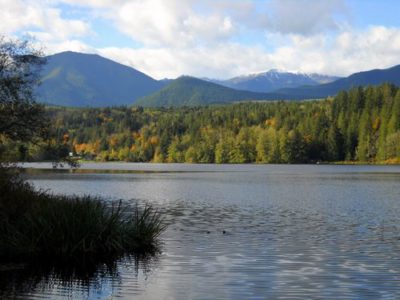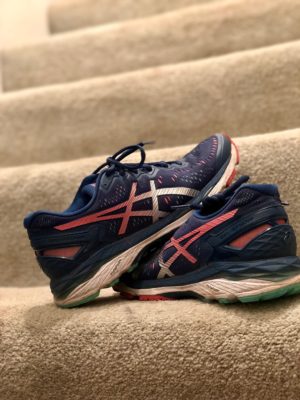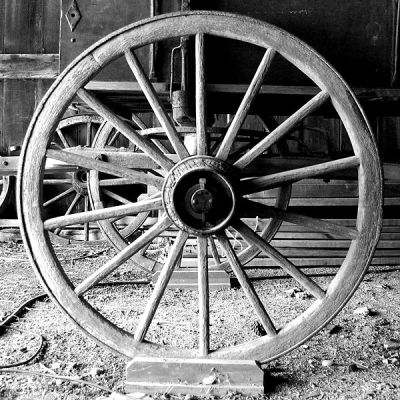I’ve spent sixteen years teaching for my current district and until recently I couldn’t have told you what road or geographic landmark determines whether a student attends my school or the neighboring district’s high school. I did know that our district is large geographically. We have a “remote but necessary” elementary school in our district that serves 40 students who live upriver.
 We use a variety of terms to describe geographic areas in our school community. Upriver is a pretty common term used to describe the area due east of our community that parallels the Lewis River. I first heard this term when I started teaching in the district. When we received our first yearly snow, I was told that the kids who live upriver needed to go home. I didn’t really understand but later, during the summer, I went hiking and discovered that upriver includes a significant elevation gain that approaches the Gifford Pinchot National Forest and Mt. St. Helens. The bottoms is another area I’ve often heard students reference. I really had no sense of where that was nor did I ever find myself in a position to go explore the area. I’d ask and folks would point in a direction but it never made much sense to me. There was talk amongst staff that students would go hang out by the bottoms. I also knew that some of my students lived over there (wherever it was). I came to learn that this area is close to the Columbia River. There are a few parks down there and a road that runs along it that seems a bit too narrow for driving high speeds. It’s also host to some local farms and farm families.
We use a variety of terms to describe geographic areas in our school community. Upriver is a pretty common term used to describe the area due east of our community that parallels the Lewis River. I first heard this term when I started teaching in the district. When we received our first yearly snow, I was told that the kids who live upriver needed to go home. I didn’t really understand but later, during the summer, I went hiking and discovered that upriver includes a significant elevation gain that approaches the Gifford Pinchot National Forest and Mt. St. Helens. The bottoms is another area I’ve often heard students reference. I really had no sense of where that was nor did I ever find myself in a position to go explore the area. I’d ask and folks would point in a direction but it never made much sense to me. There was talk amongst staff that students would go hang out by the bottoms. I also knew that some of my students lived over there (wherever it was). I came to learn that this area is close to the Columbia River. There are a few parks down there and a road that runs along it that seems a bit too narrow for driving high speeds. It’s also host to some local farms and farm families.
Over the past few years I’ve been really thinking about what it means to “know my students.” Like many, I do interest inventories at the beginning of the year to diagnose learning styles. I learn about likes and dislikes, habits, playlists, and have my students write me a letter so I can get a sense of their voice. Last year, I decided that I wasn’t okay with the fact that I could go a class period without talking to each student, so I positioned myself in front of my classroom door every class period before students walked in so that I could at least greet them coming into class. I find these interactions encouraging as they’ve led to other, deeper conversations about issues going on at home, struggles students are having with peers, or challenges students are facing in my class. But at the end of last year, I still found myself wanting to learn more about the community my students live in.
Because of my work as a part time instructional coach I assist in the planning for site based professional development experiences. I asked our principal if he would be willing to carve out time before the school year to take our staff on a “field trip” to see our community. I wanted to know where the bottoms are and what conditions were like for our students. I wanted to see the boundary lines so I could better understand our students and our district. My principal figured out the “how” and the route, and when we came back for our August trainings, our staff loaded into a school bus one morning to take a tour. The bus took us to places that aren’t on the main roads or that I pass as I drive to work each day. We went past the subsidized housing units, the trailer parks, and piled up decommissioned railroad cars that families live in near the bottoms. We drove past the camp ground that lacks running water that is home to some of our students. The bus driver took us up roads that quickly climb elevation to some of the most beautiful homes in our community with expansive and breathtaking views of valleys and rivers (Note: How do our bus drivers turn the bus around up there?). While the tour was guided by my principal, staff who grew up in town added information to help round out the experience. On that day we saw poverty and wealth and my eyes were opened to the stark contrast between what home looks like for so many of my students.
That trip was nearly four months ago and it still resonates with me. I find myself thinking about where my students live and what their lives must be like in those apartments, houses, trailers, and tents. I’m really seeing my students. I find myself patient with the student who couldn’t finish her work last night. I know now that she doesn’t have reliable electricity.



